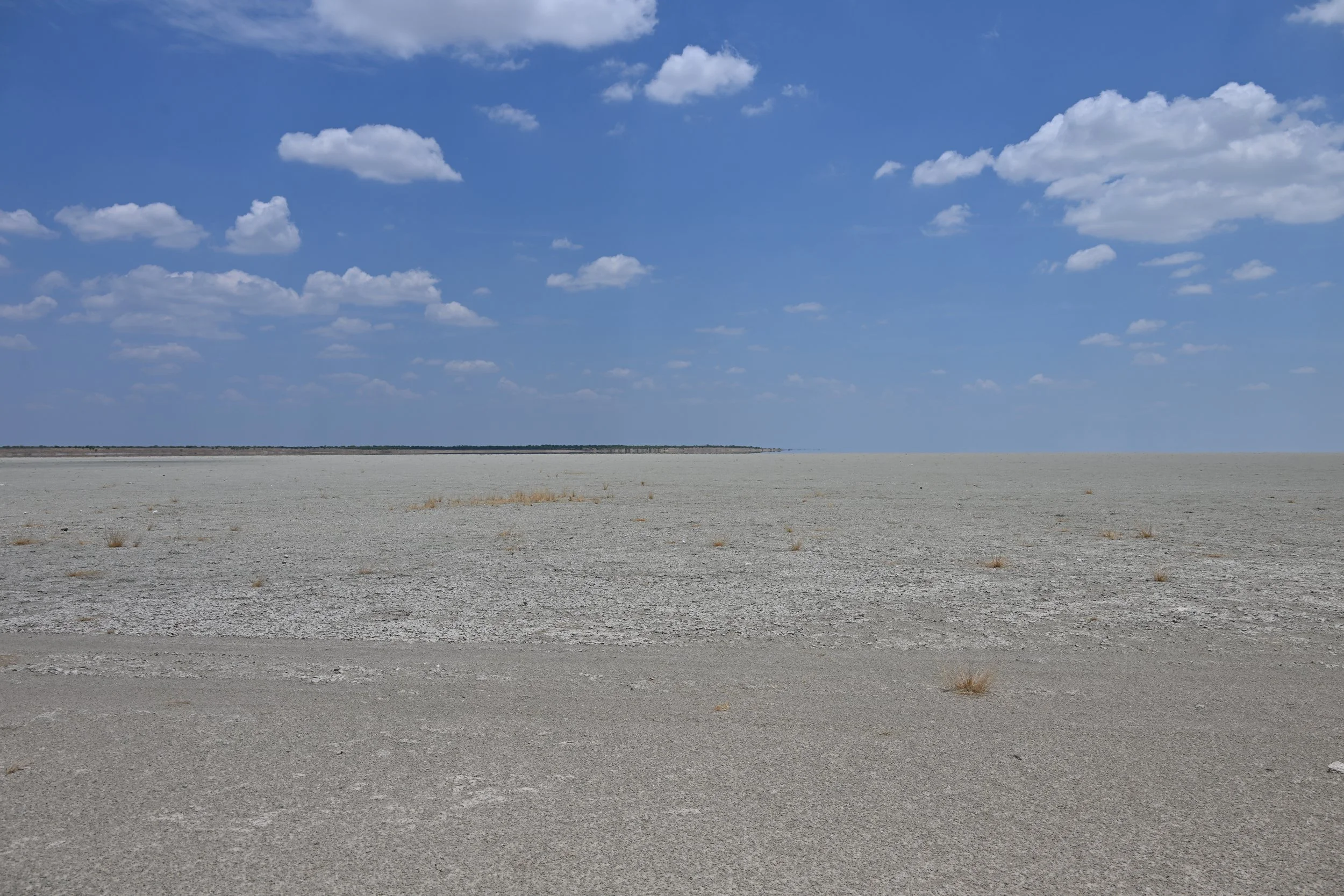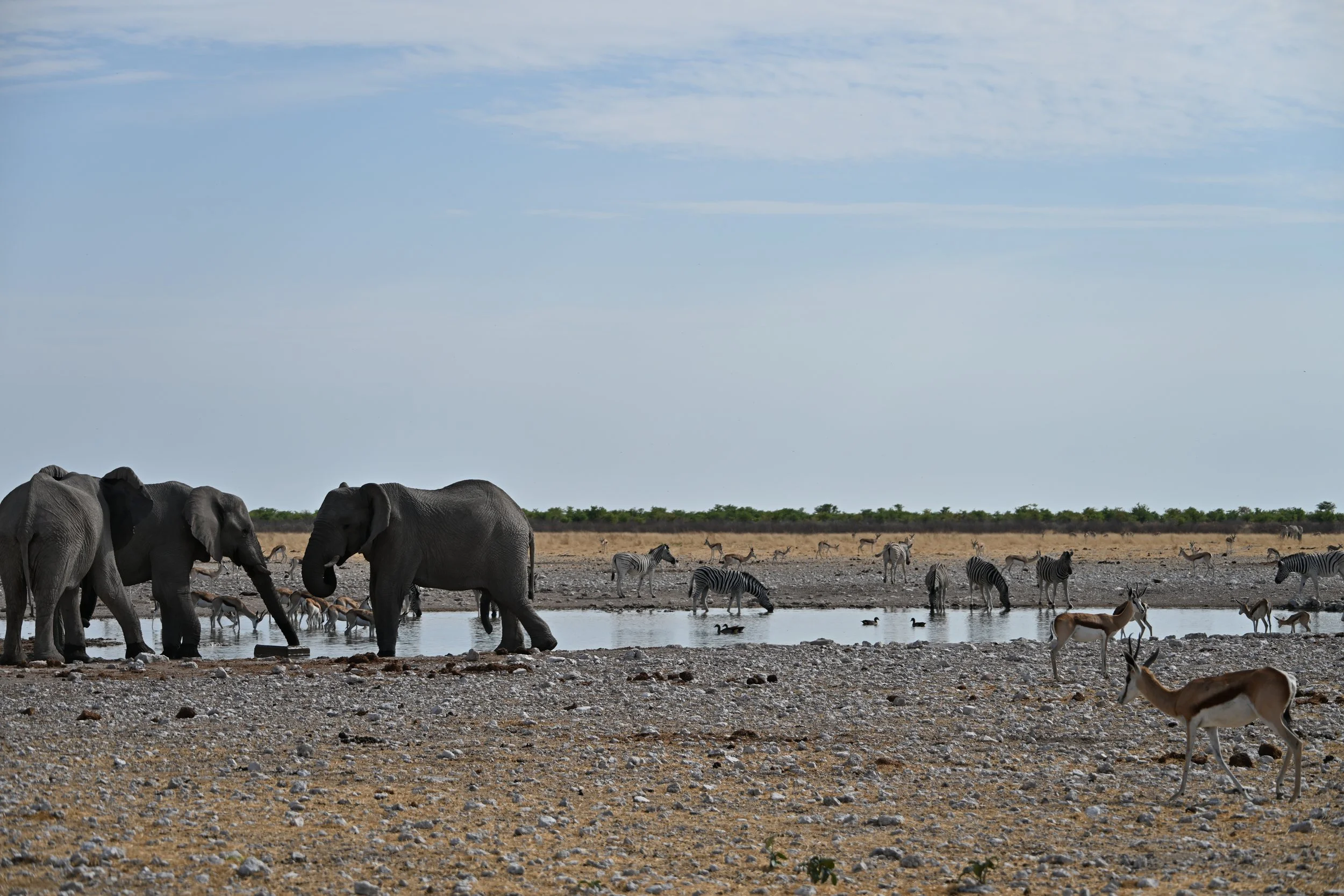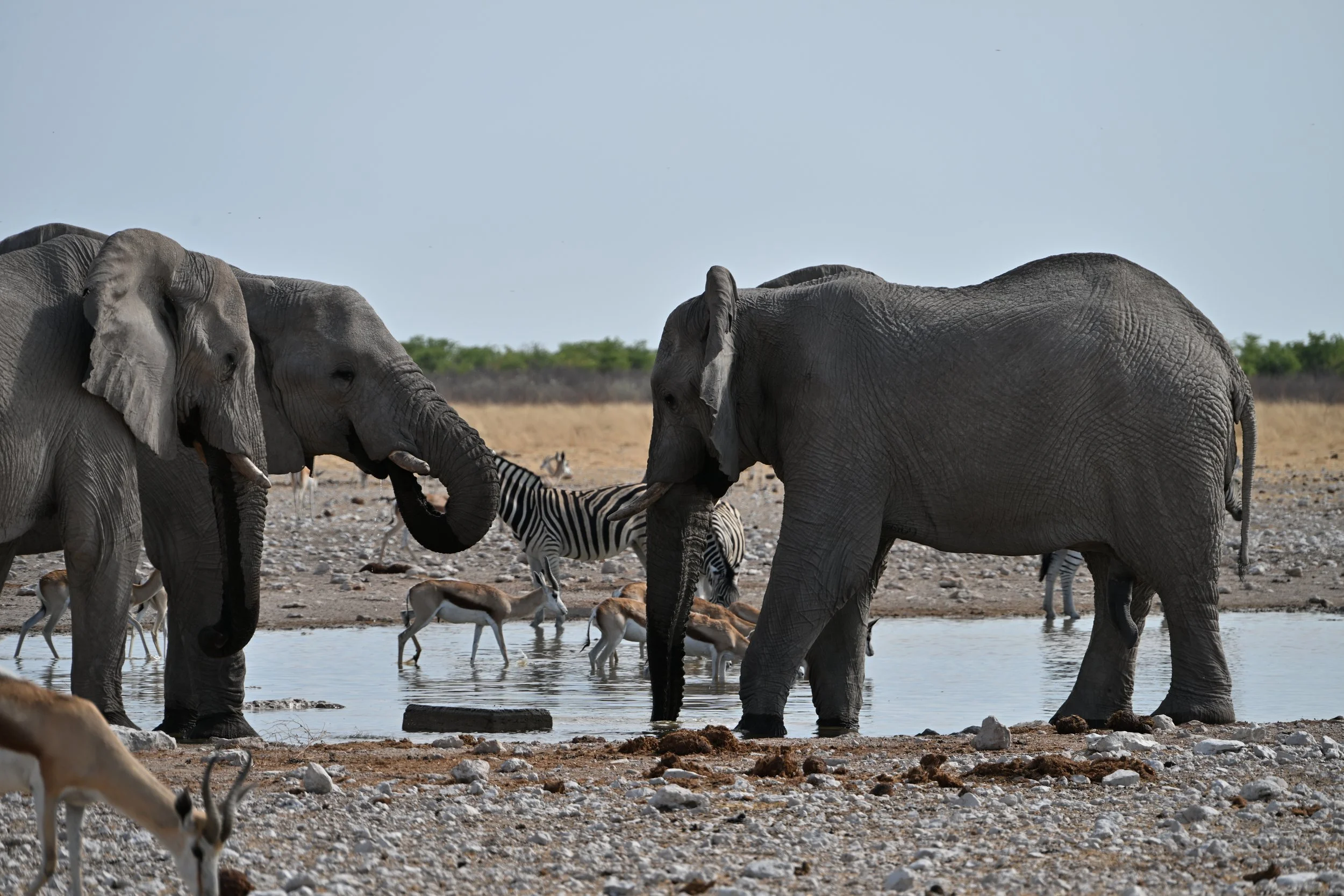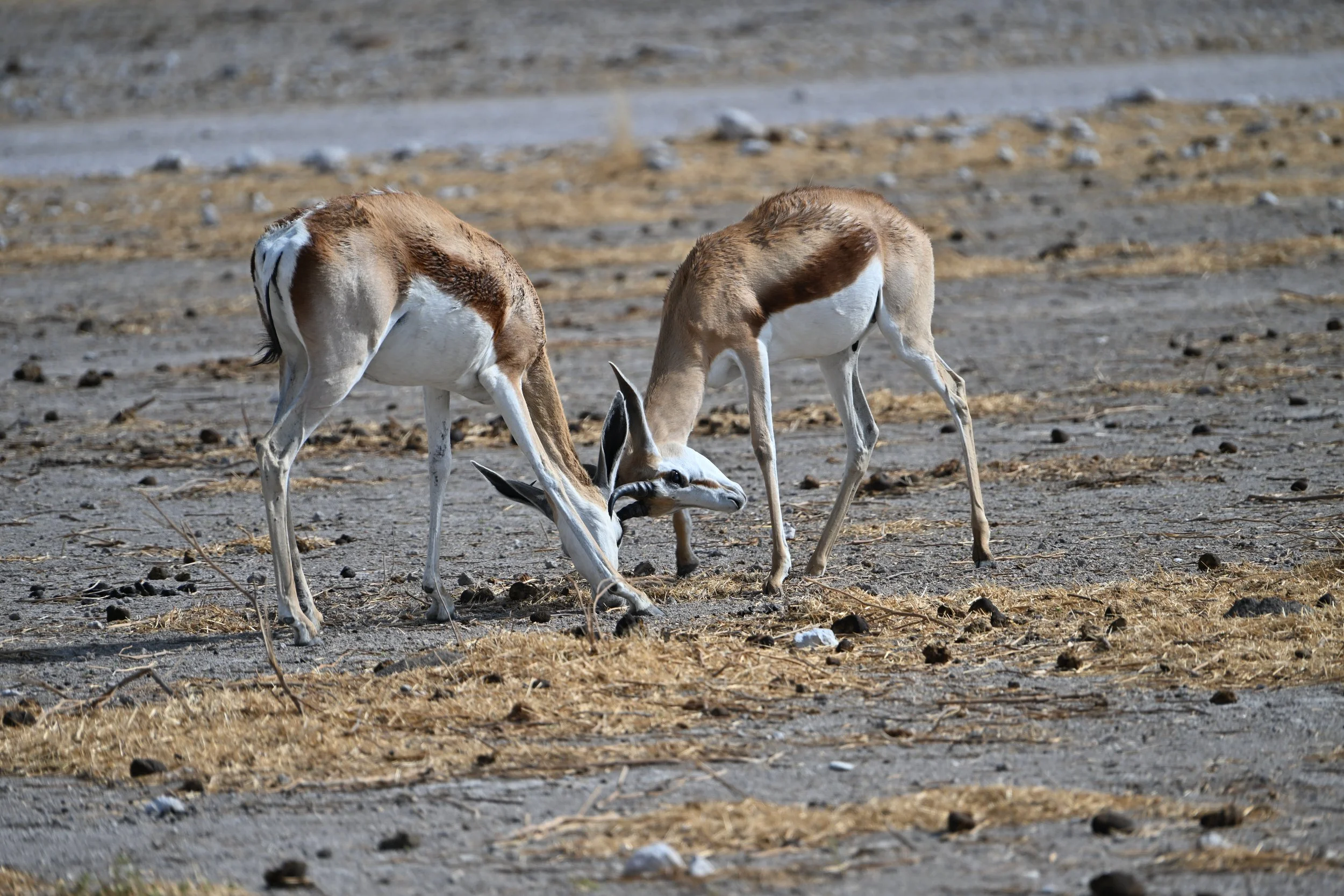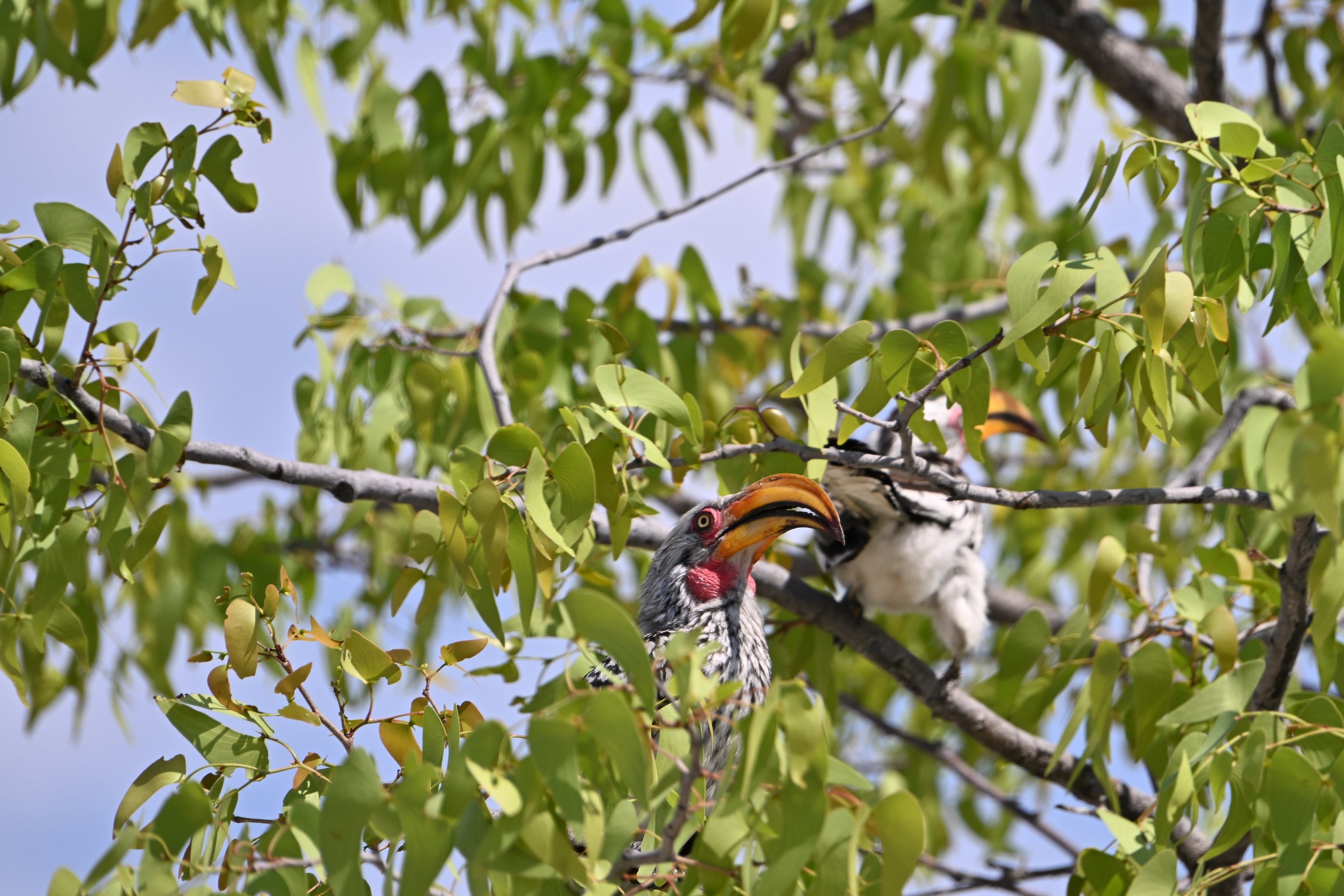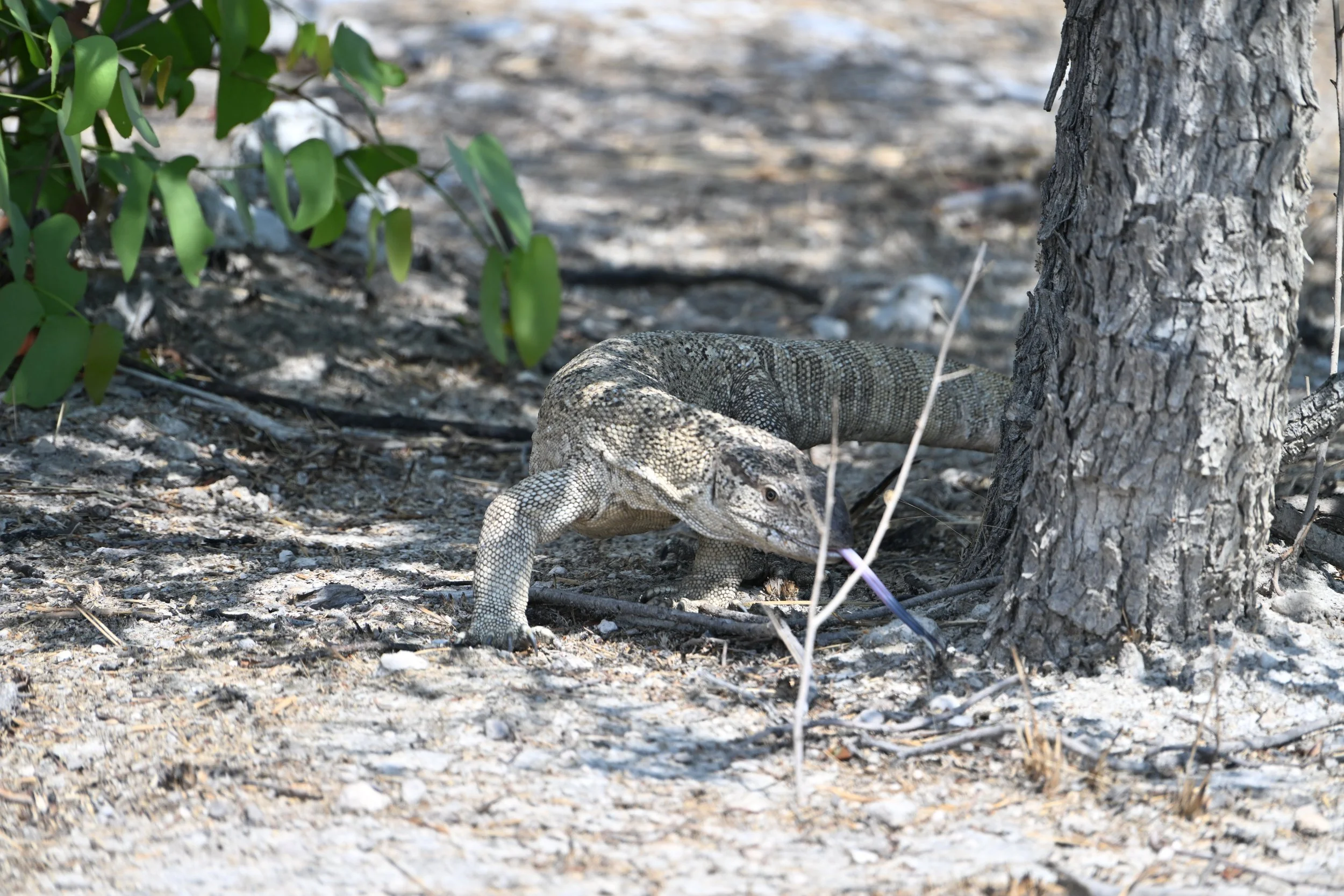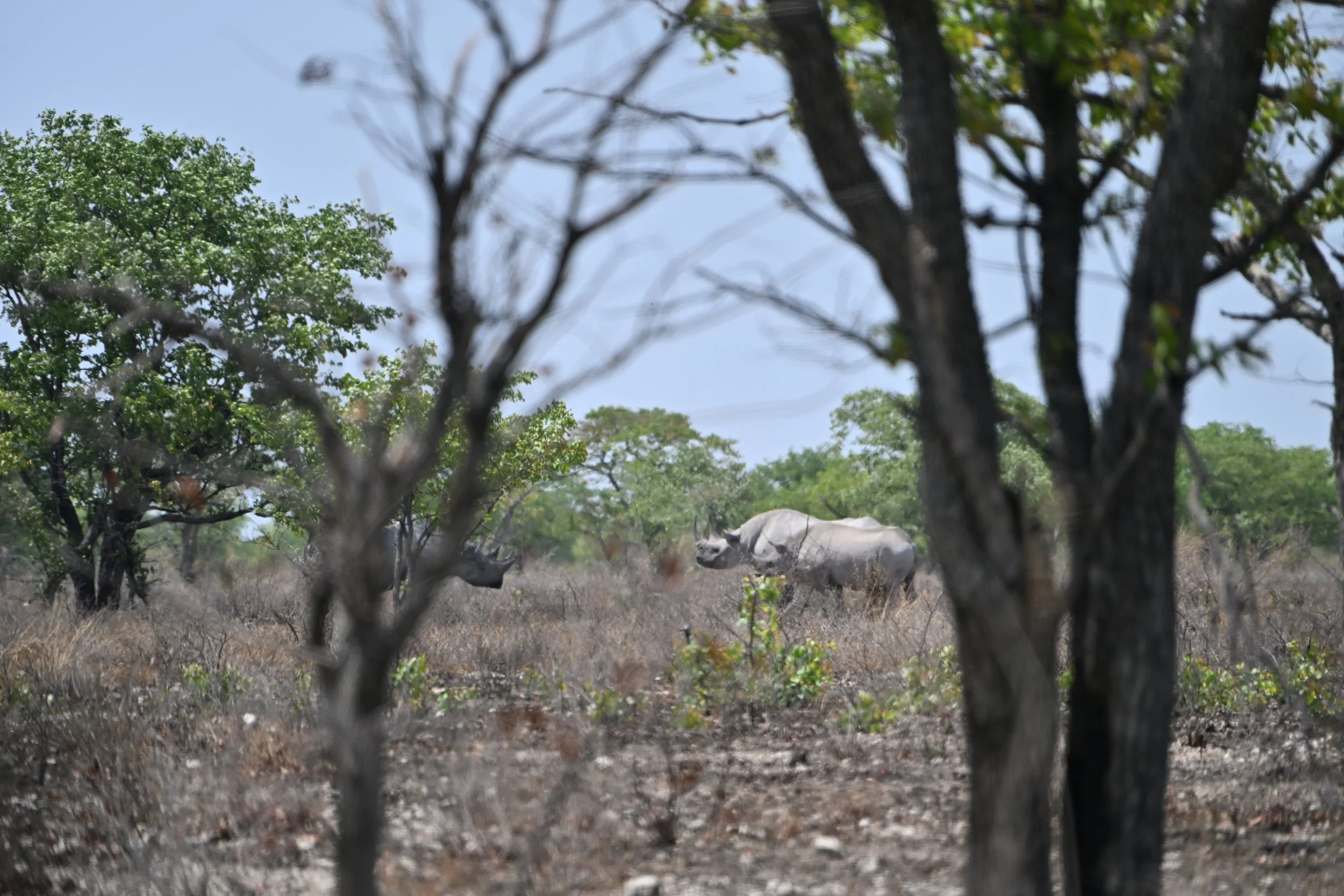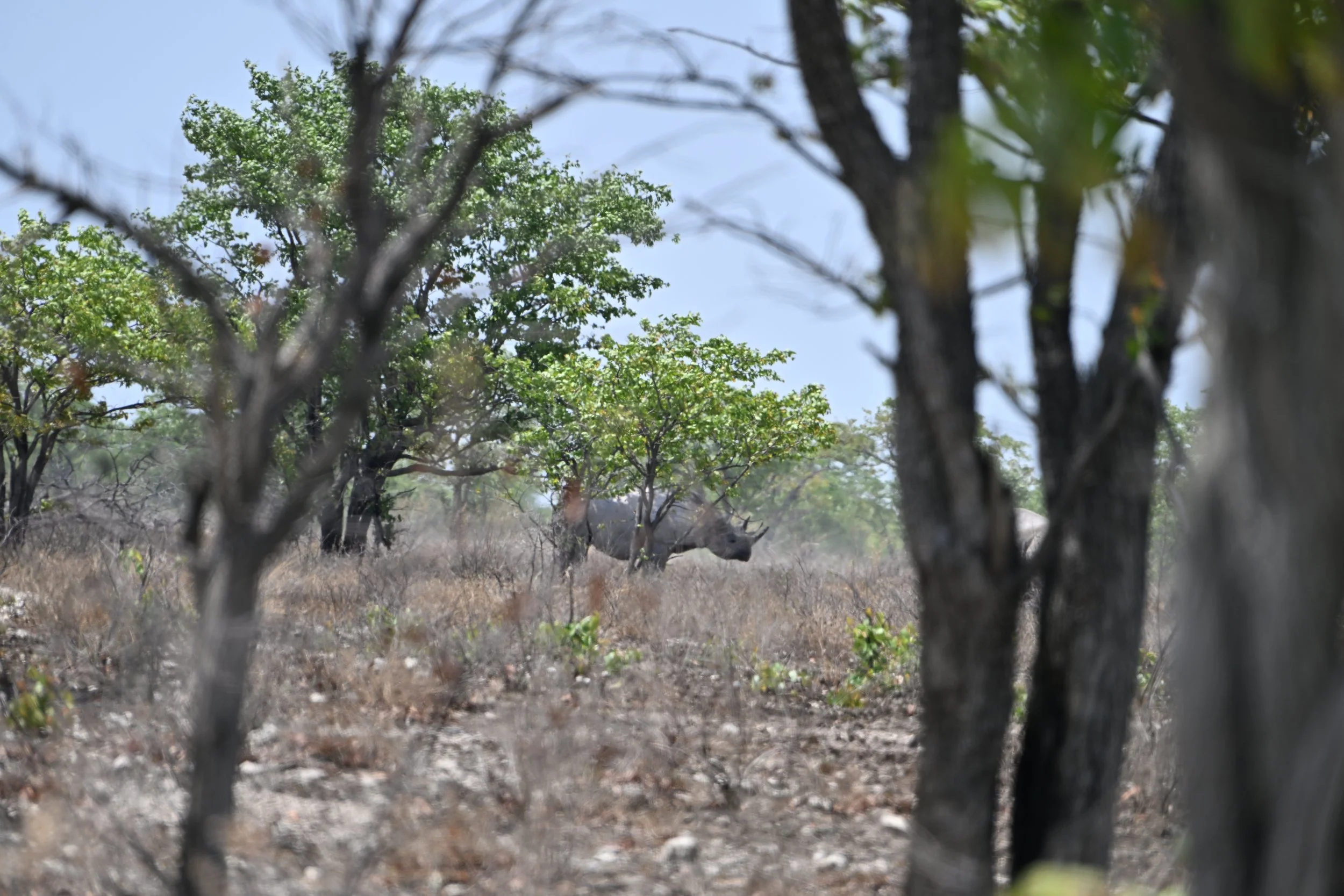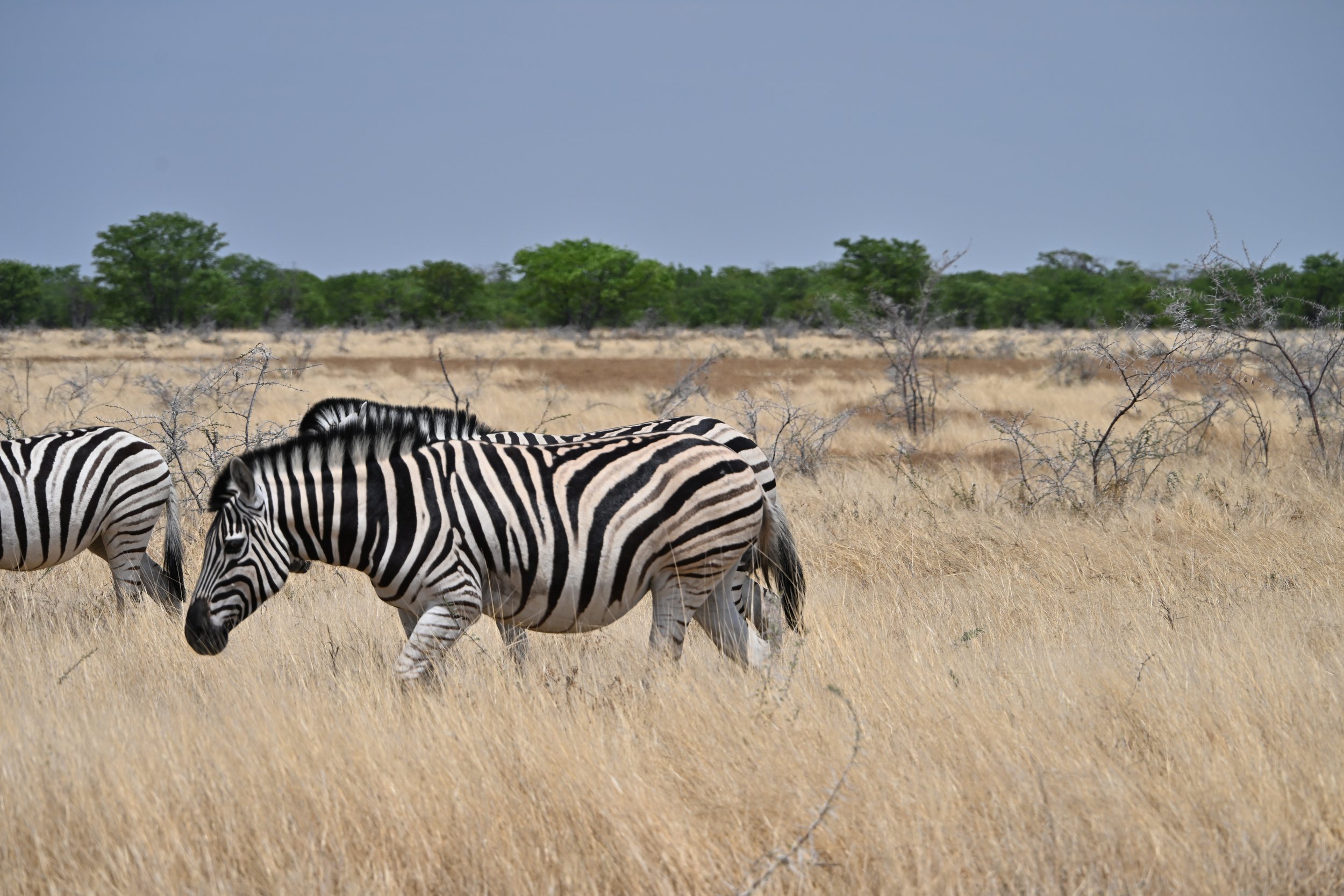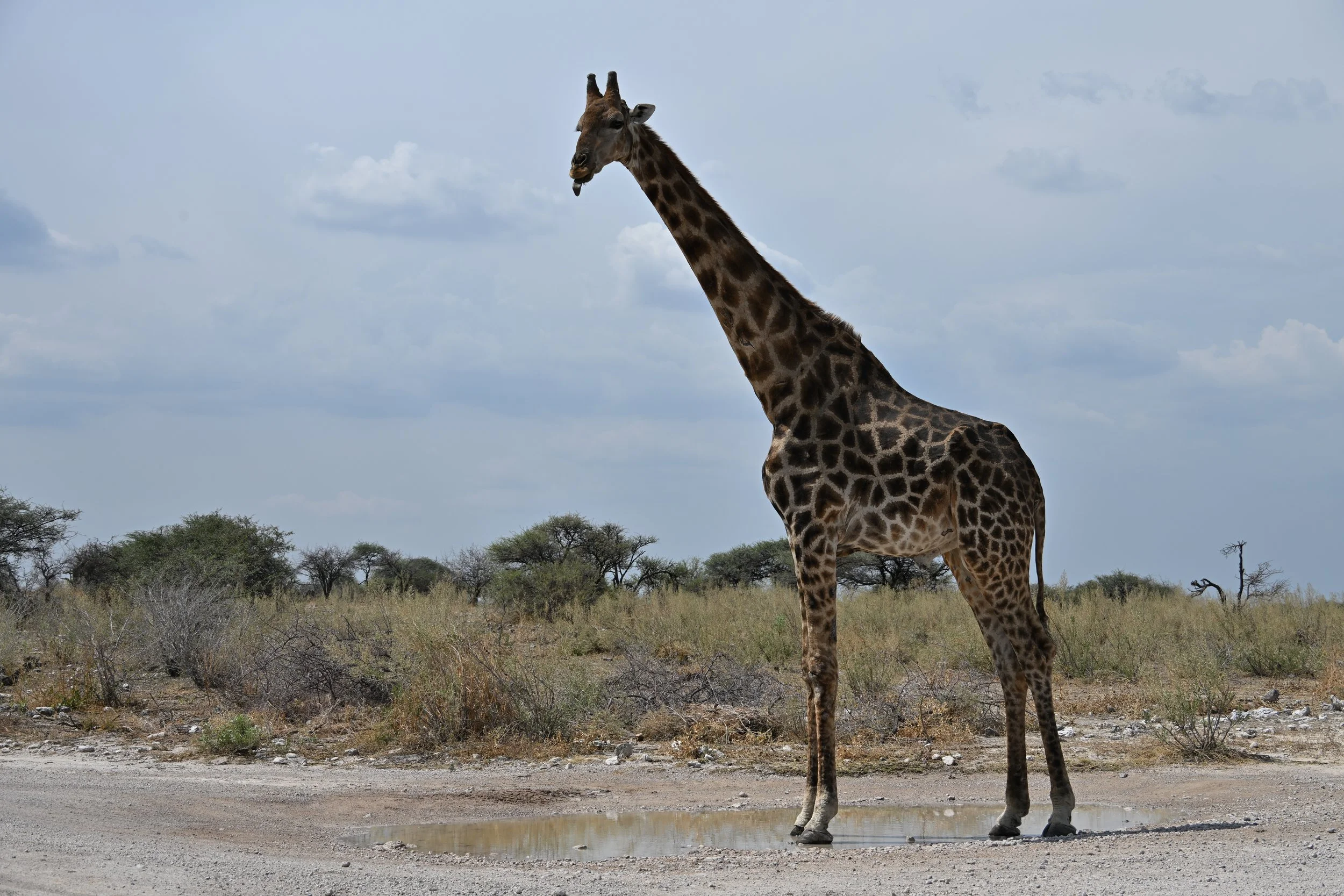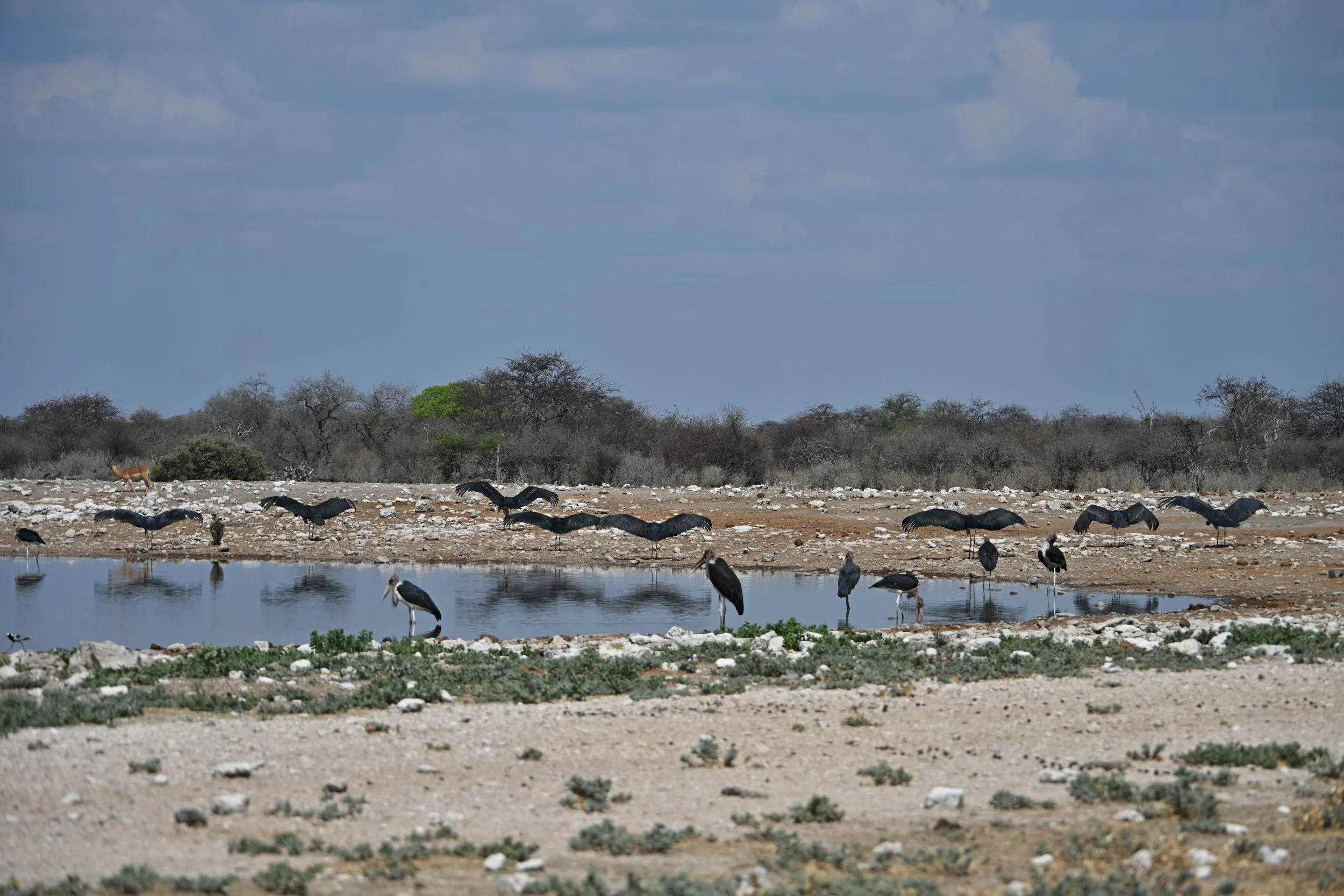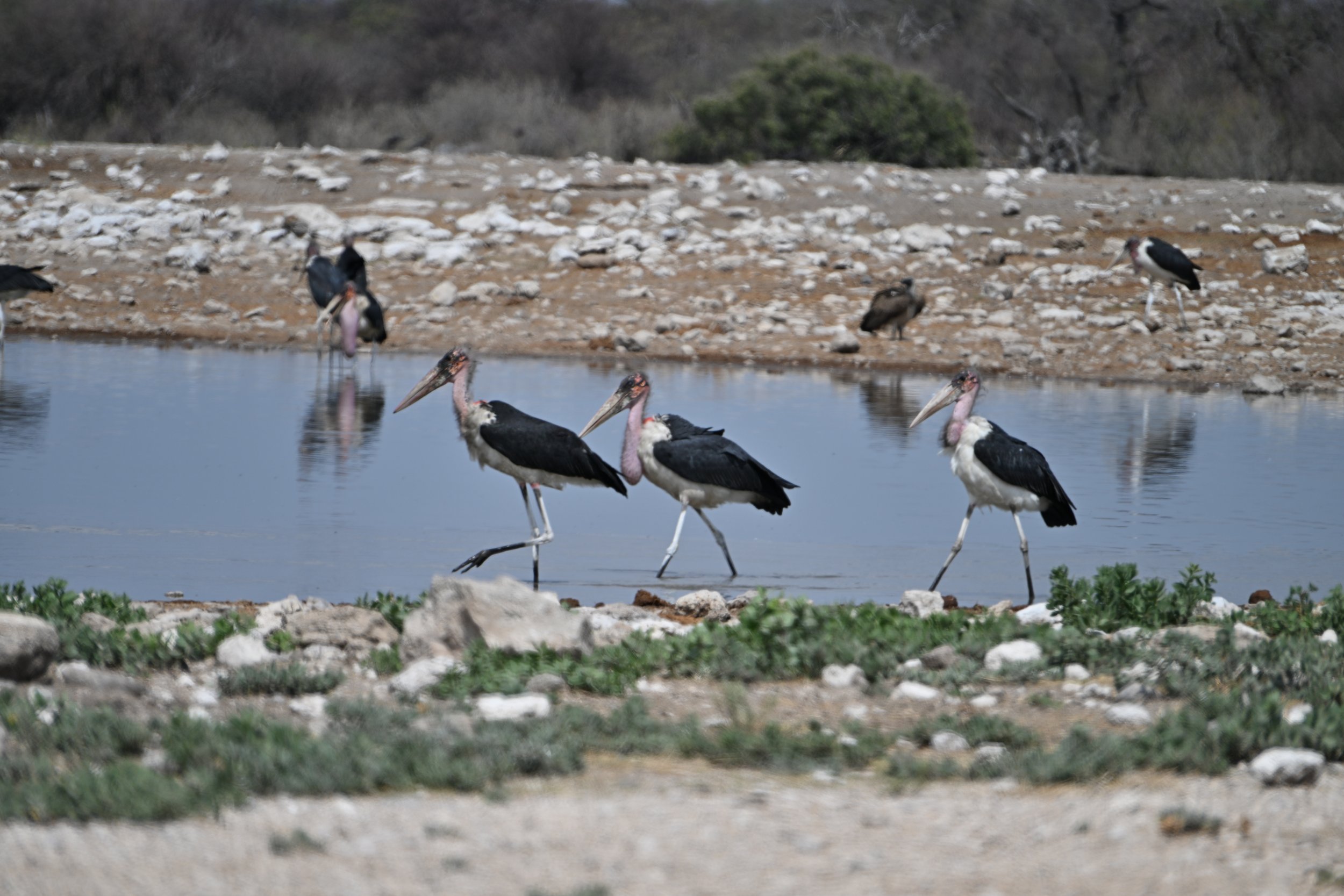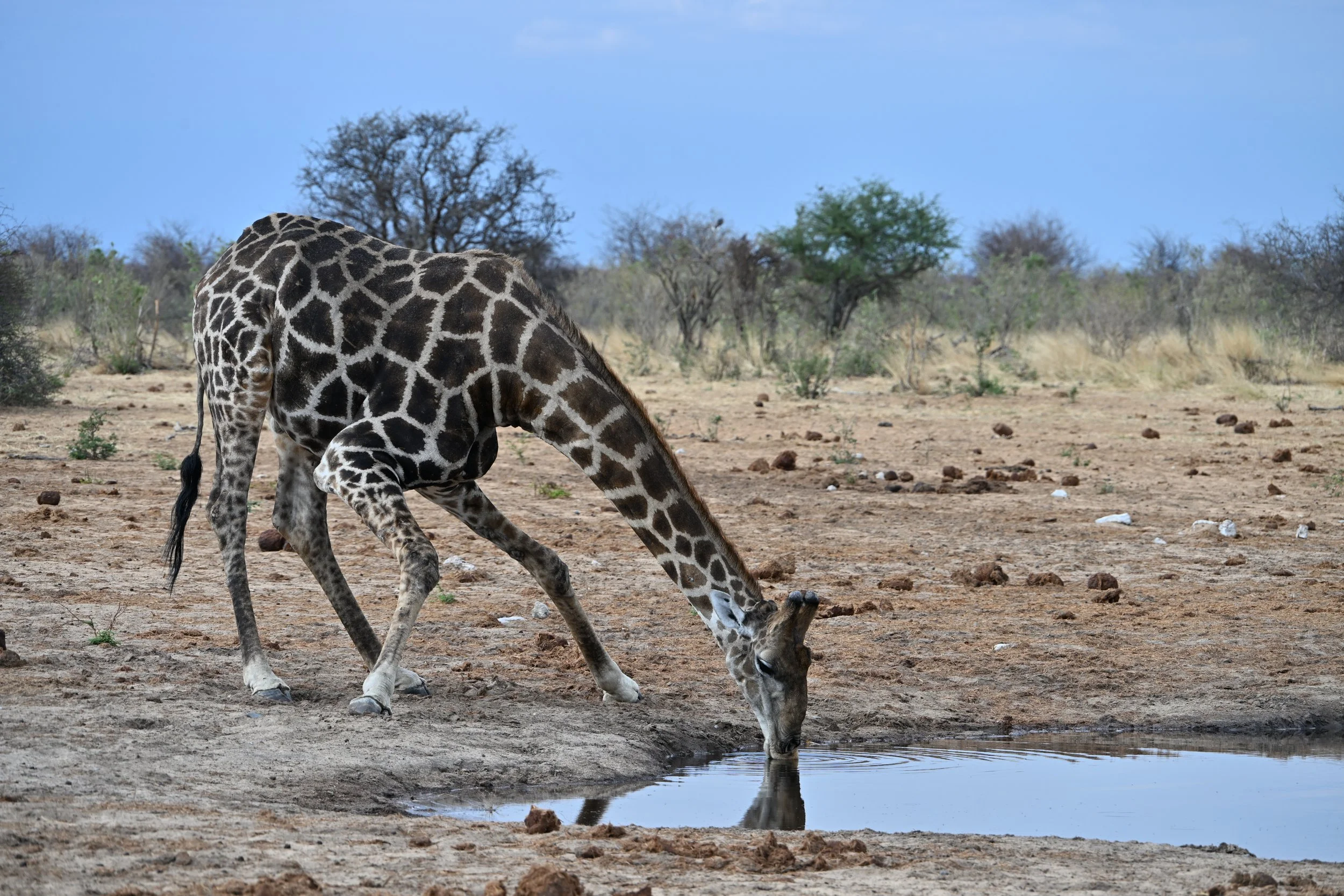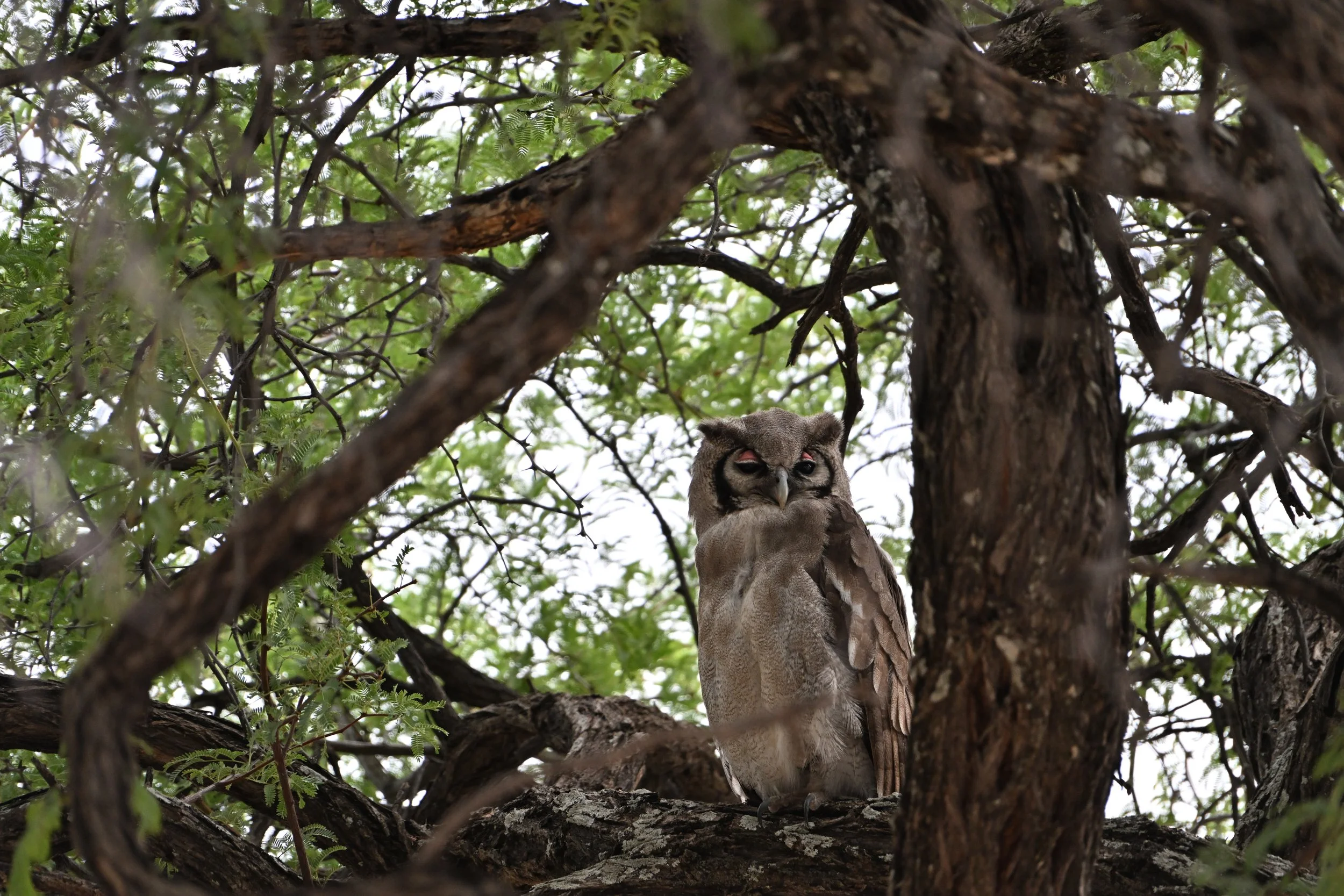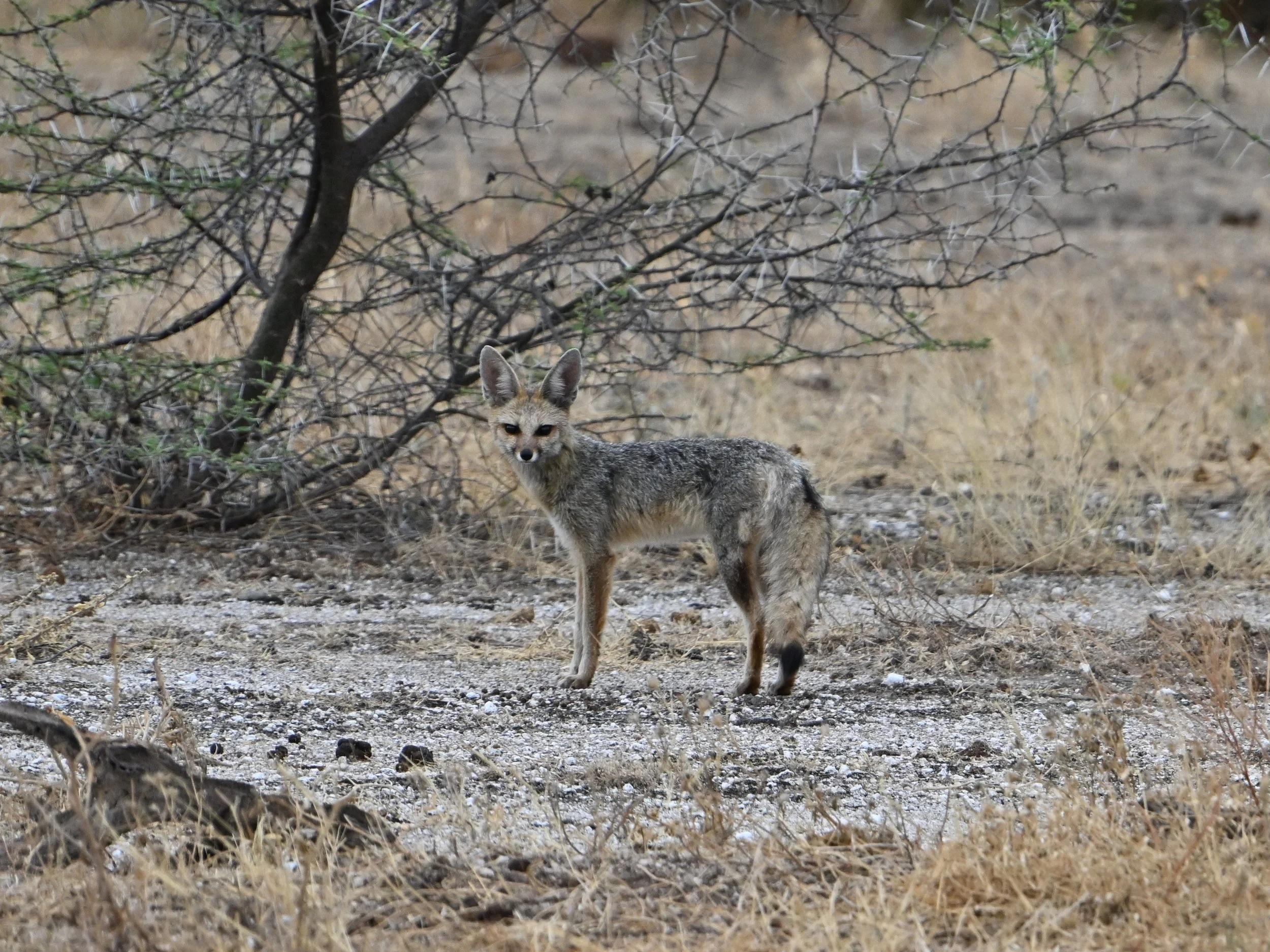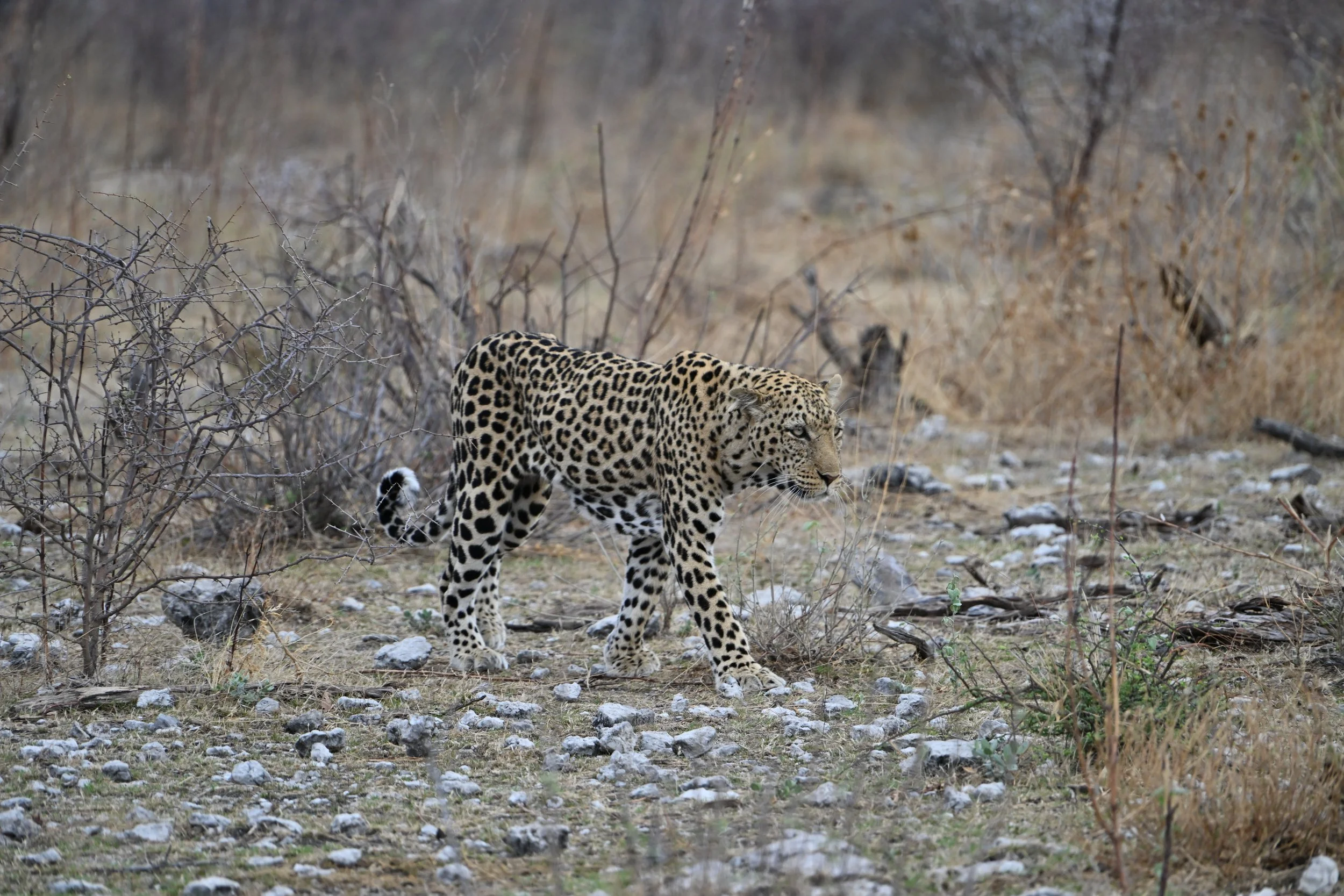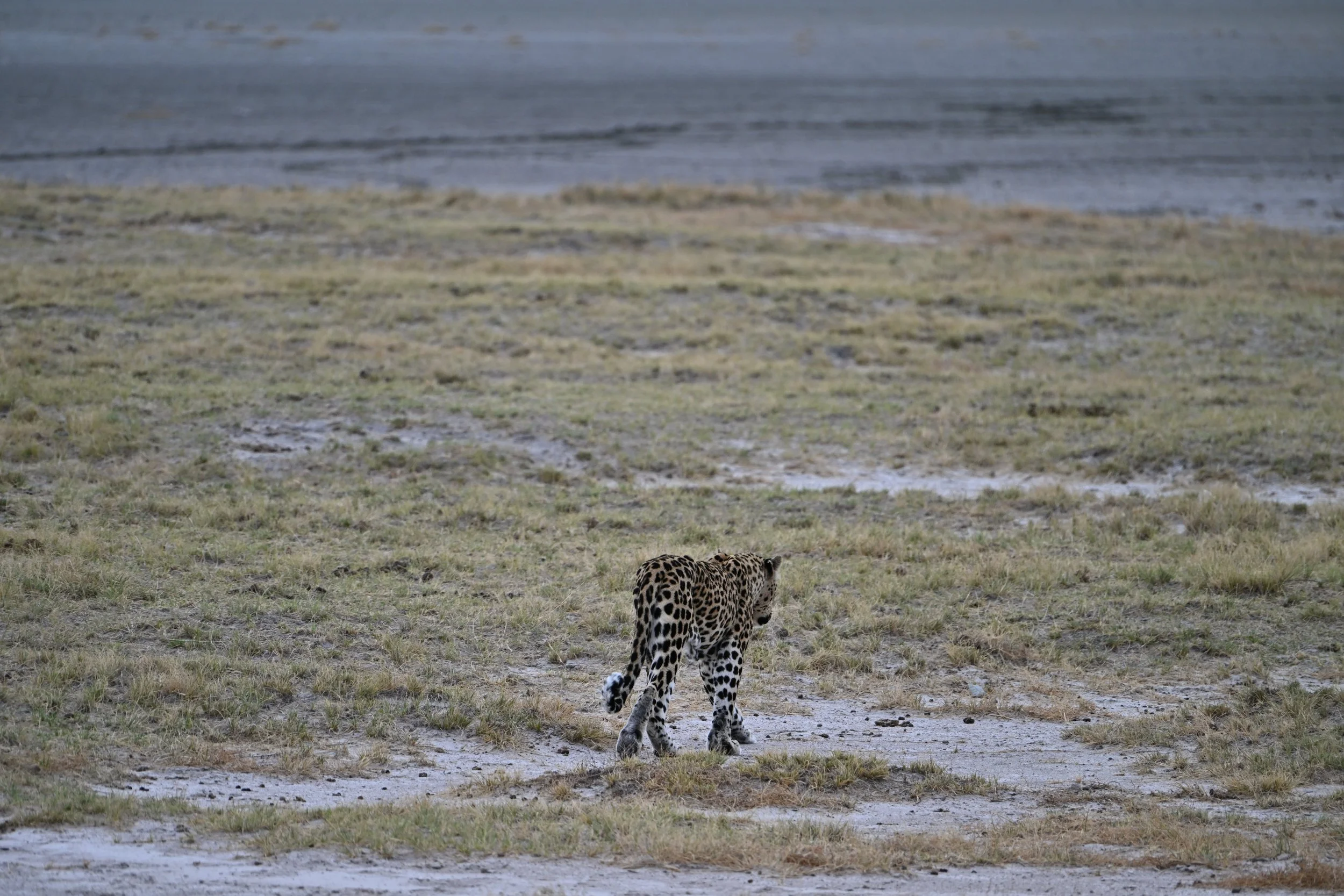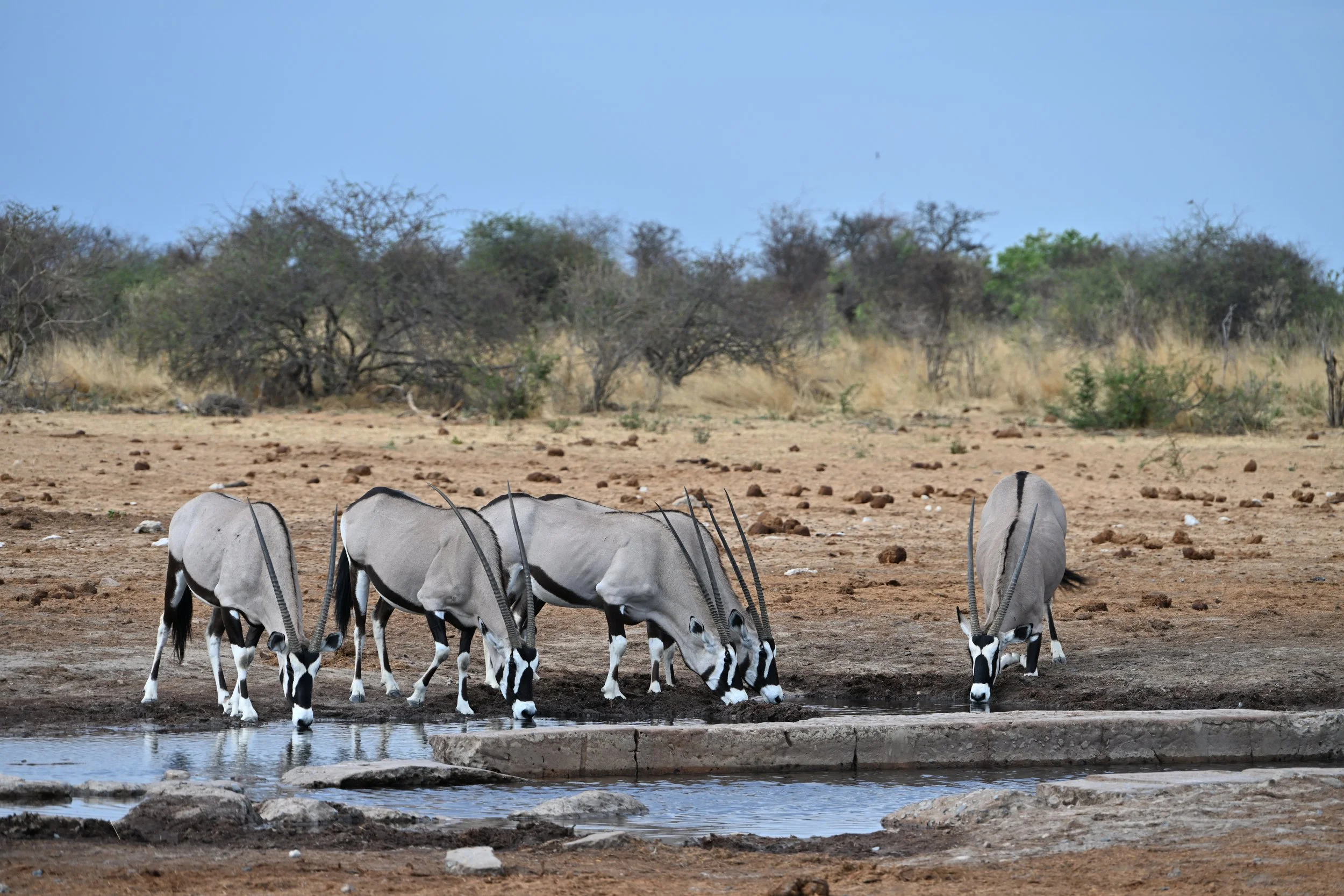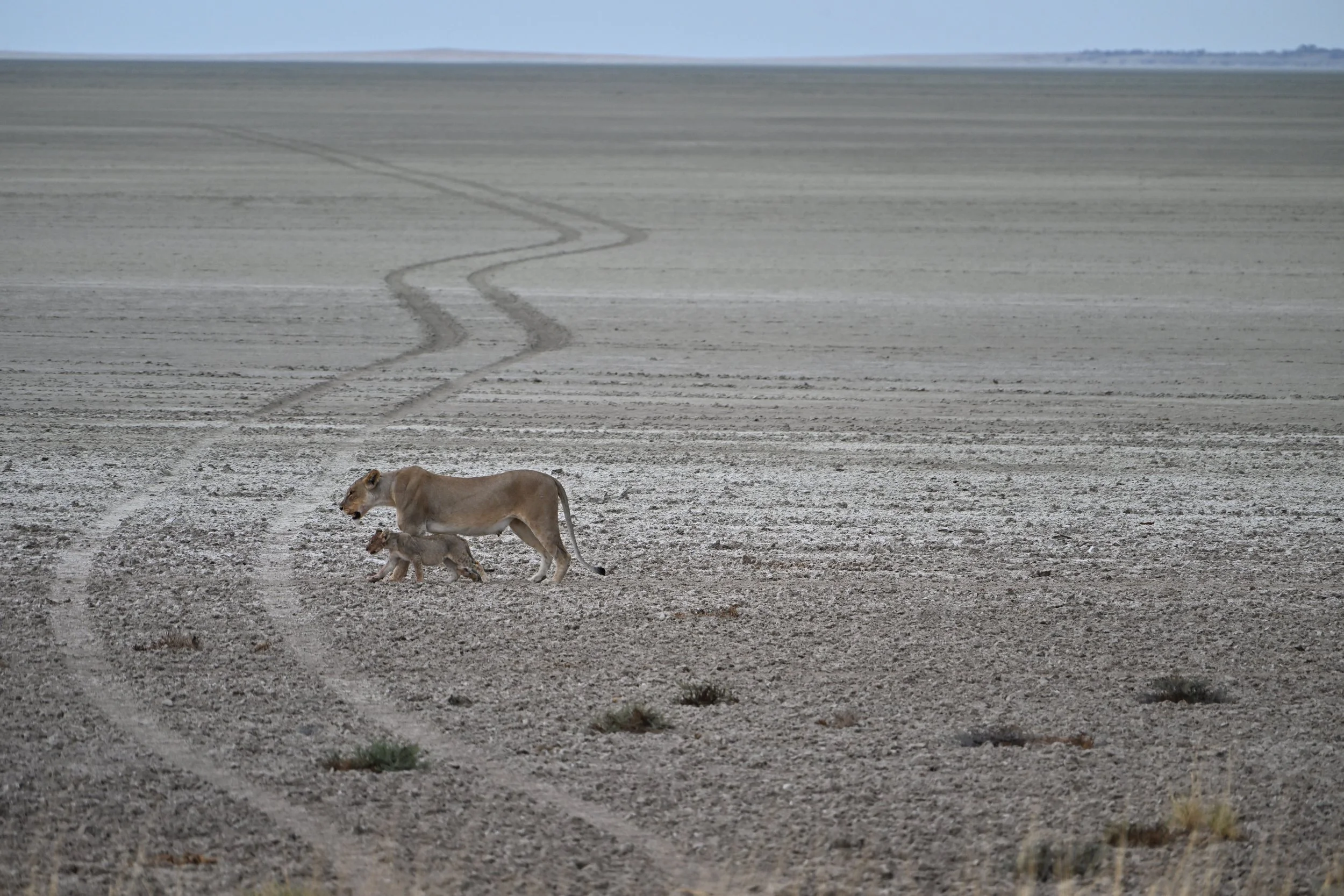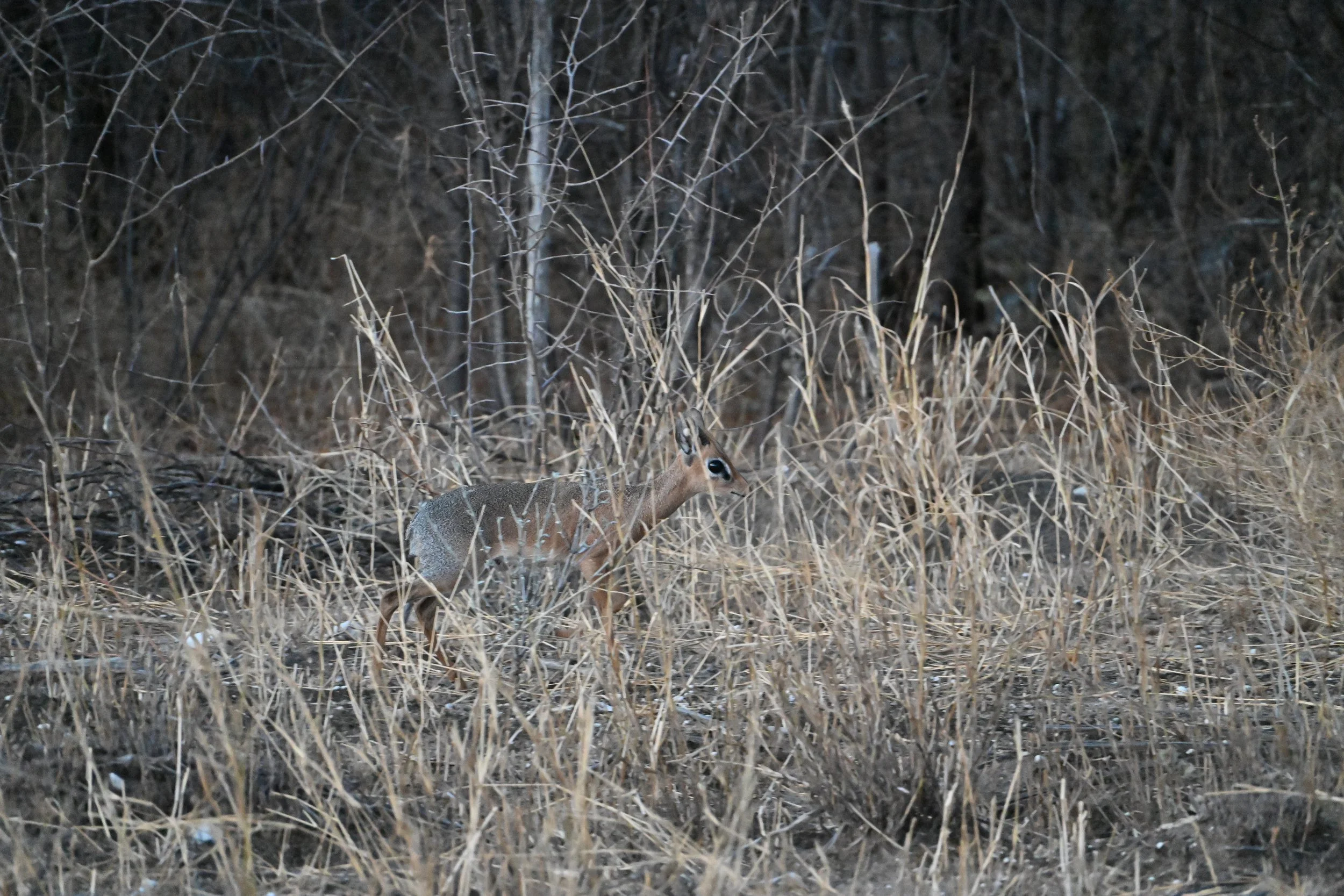Etosha National Park
Etosha is one of the largest national parks in all of Africa, encompassing 8,600 sq miles. The Etosha Pan is a large salt pan (75 miles long) where water collects in the rainy season. When we were there in late Oct., it was quite empty…
(we were able to drive out into the middle of the lakebed)
… and dry -
There’s still an amazing amount of wildlife to be found. On our self-drive safari through Namibia, we had been driving ourselves between camps, but then going on game drives at each place, with a guide and spotter. Our instructions here were to “enjoy a self-guided game drive that may take you all day” on our way to the next camp. What??
So, we first focused on birds, like that Kori Bustard above. It’s the largest flying bird in Africa, weighing 25 lbs on average and with a wingspan of 7-9 feet! We never saw one flying, rather they were always strutting around, singly or in mated pairs.
There were a lot of wide open plains…
… and we were wondering where all the purported wildlife was.
Our first stop at a waterhole -
Some Springbok males were tussling -
Then we found a small copse of Mopane trees where a pair of Southern Yellow-billed Hornbills were hanging out…
… and a large Rock Monitor Lizard rustled out of the underbrush -
check out that blue and purple tongue!
As we drove on through the park, we came upon several cars pulled over with their long lenses and binoculars trained deep in the woods —
RHINOS! We think they were probably Black Rhinos (I’m guessing by the shape of their upper lips being pointed, and their location in a brushy area rather than in grasslands).
No better pictures were to be had, as we were forbidden to leave our vehicle, and we weren’t in a game drive truck where the guides go off-roading.
As, promised… more Plains Zebras -
We drove down a very long, very rutted gravel road to a waterhole, only to find -
either a very pregnant or very full Spotted Hyena
There was no other wildlife to be seen.
When we got back out to the main road, this one was just waiting for us to pass -
At the next waterhole, we had a bonanza; Maribou Storks sunning…
(these guys are really ugly) -
… and giraffes drinking. If this doesn’t look awkward and vulnerable, I don’t know what does -
Check out this video ( yes, the usual instructions to click the link at the end of the post to open it in your browser) on what it takes for them to be able to drink -
Well, we reached our next camp on the NE end of Etosha, and then went on a game drive the next morning with a knowledgeable guide. He found a gorgeous Giant Eagle Owl…
… and then a Cape Fox, in rapid succession -
The crowning moment of the morning had to be this Leopard (!)…
… that walked right in front of our truck, and along the pan, probably looking for a quiet place to rest -
Other ho-hum moments included lions…
… Oryx…
… and an Eland (very exciting for us since we had never seen one before!) -
This was an interesting sight, of a mother and cub moving along the edge of the pan -
And the smallest antelope in the world, a Dik-dik (weighing only about 10 lbs and standing about 12 in high) -
This young giraffe was loping (which is actually very difficult to capture on video) and practicing kicking -
As you can see, loping involves both front feet landing ahead of the back feet together, and then when they resume walking, the legs on the same side will move together (very interesting transition).
This sunset shows thunderclouds building up, presaging the pouring rain that soaked us that night, and began the rainy season.
